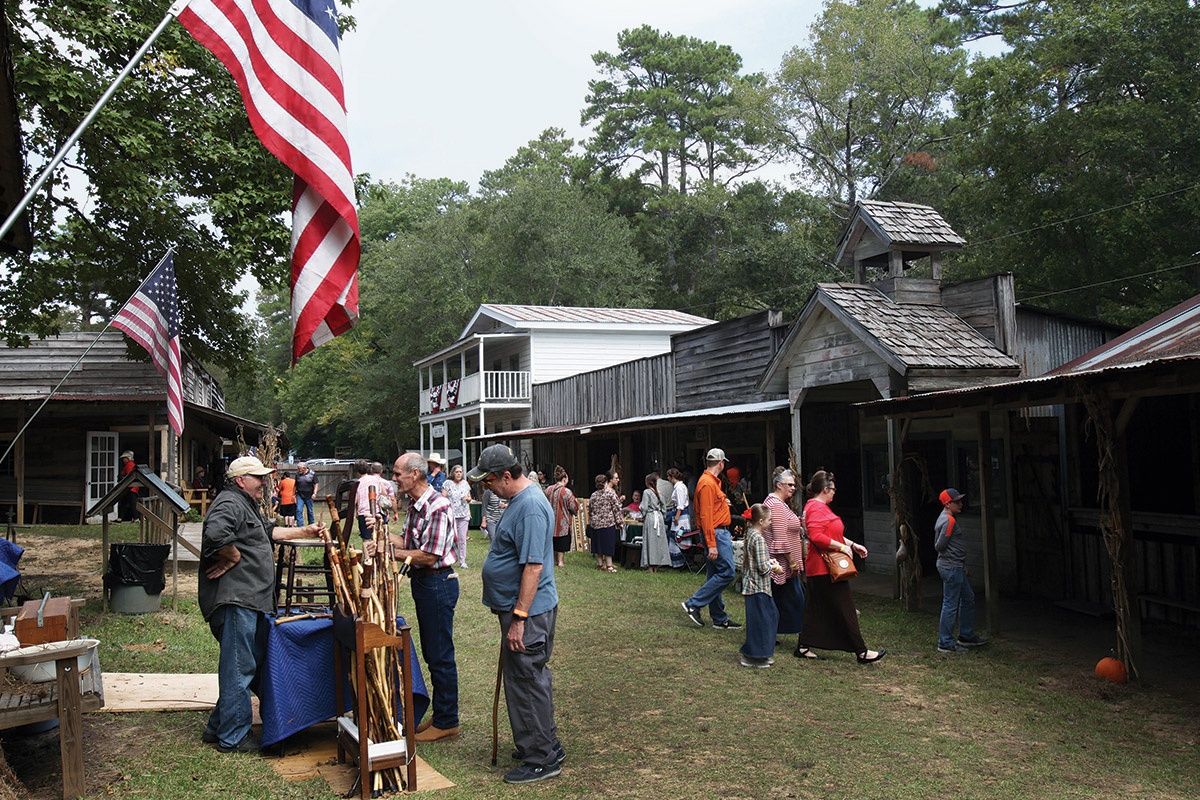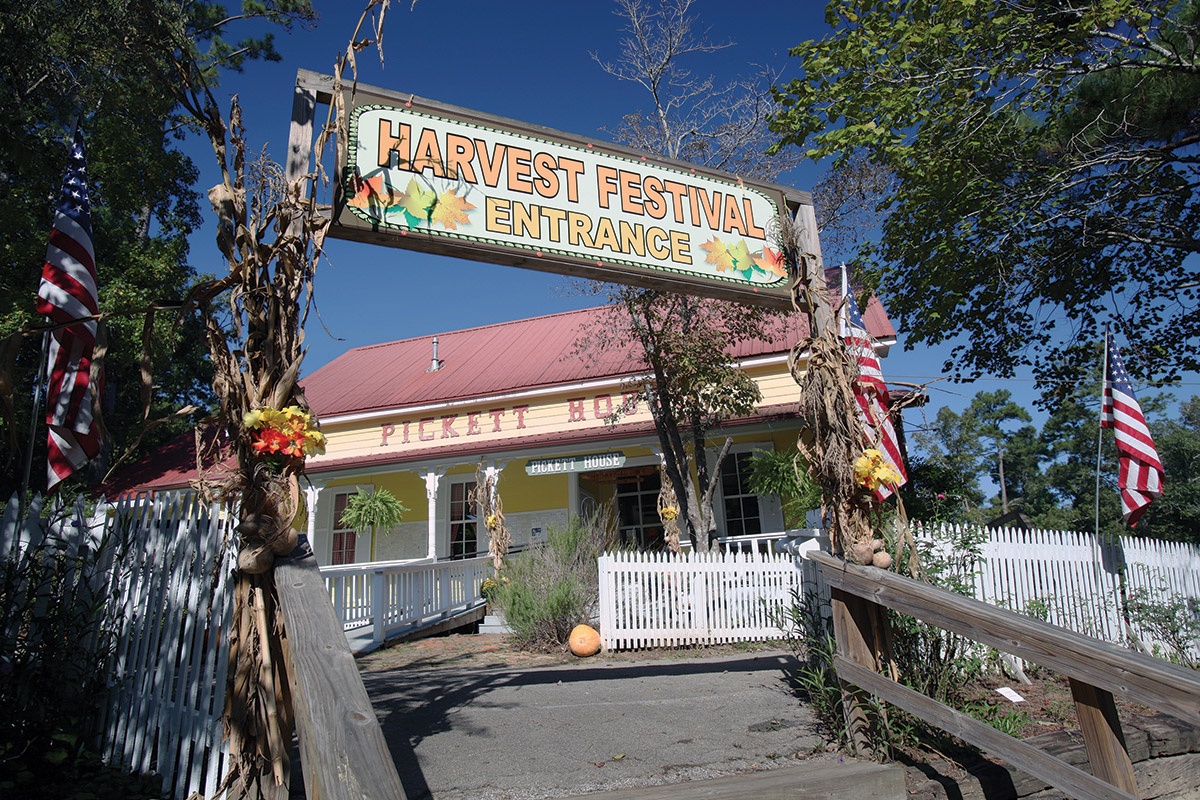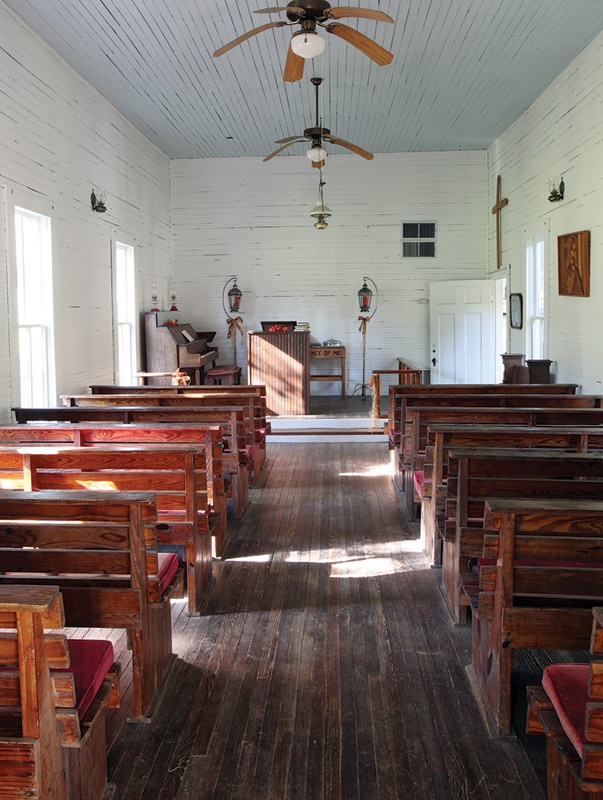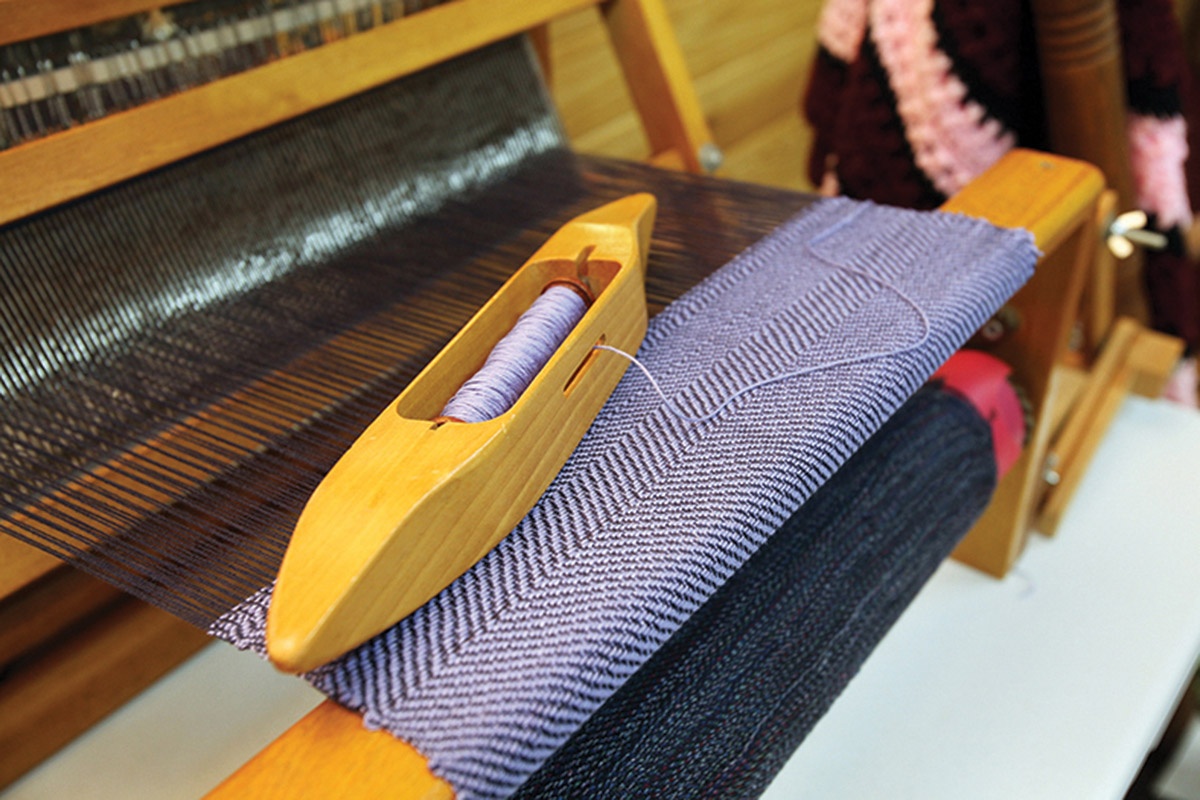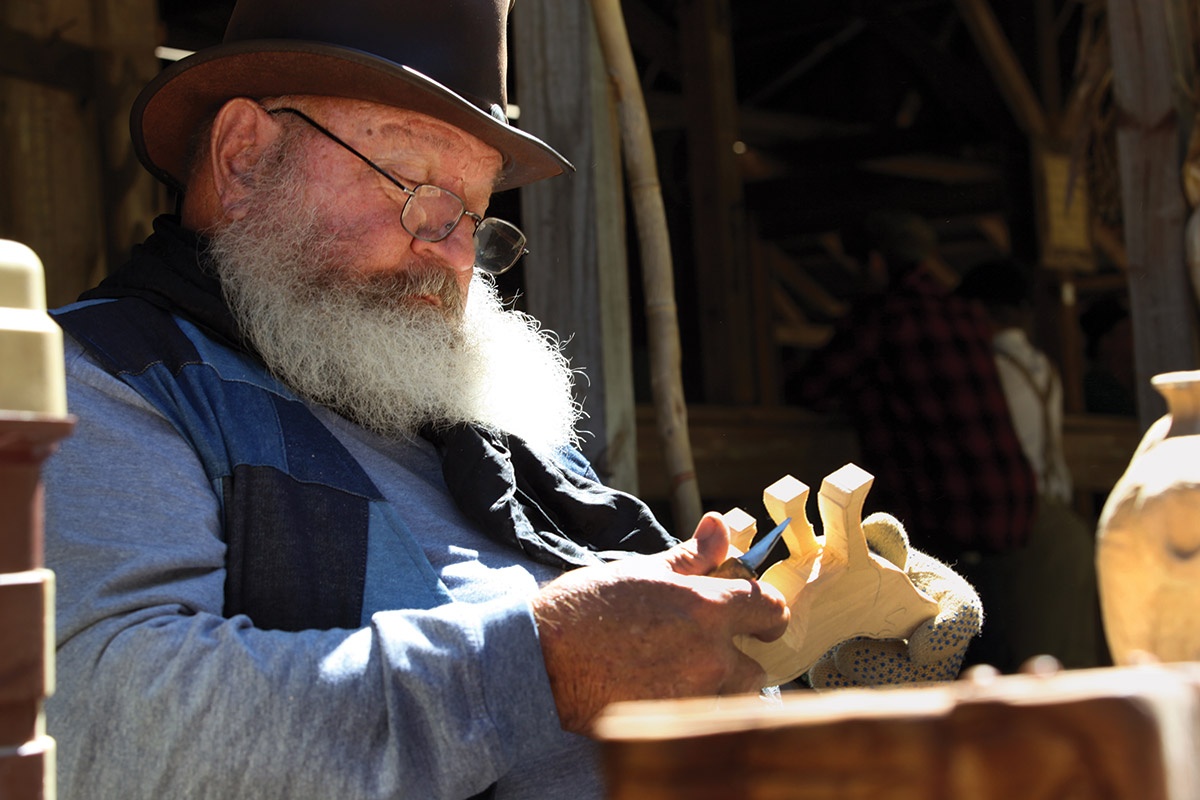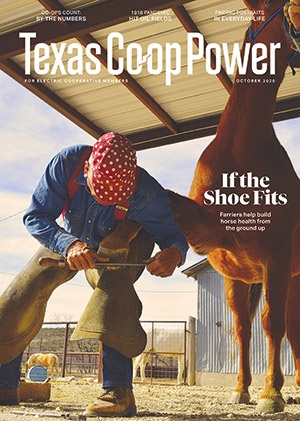Two miles west of Tyler County’s historical courthouse in Woodville, turn off U.S. Highway 190 and turn back the hands of time at Heritage Village Museum. There more than two dozen structures, some historical and some replicas, reproduce a scene typical of East Texas life from the mid-1800s to the 1920s. Visitors can stroll along the Main Street’s raised wooden walkways and feel a bygone era almost come alive.
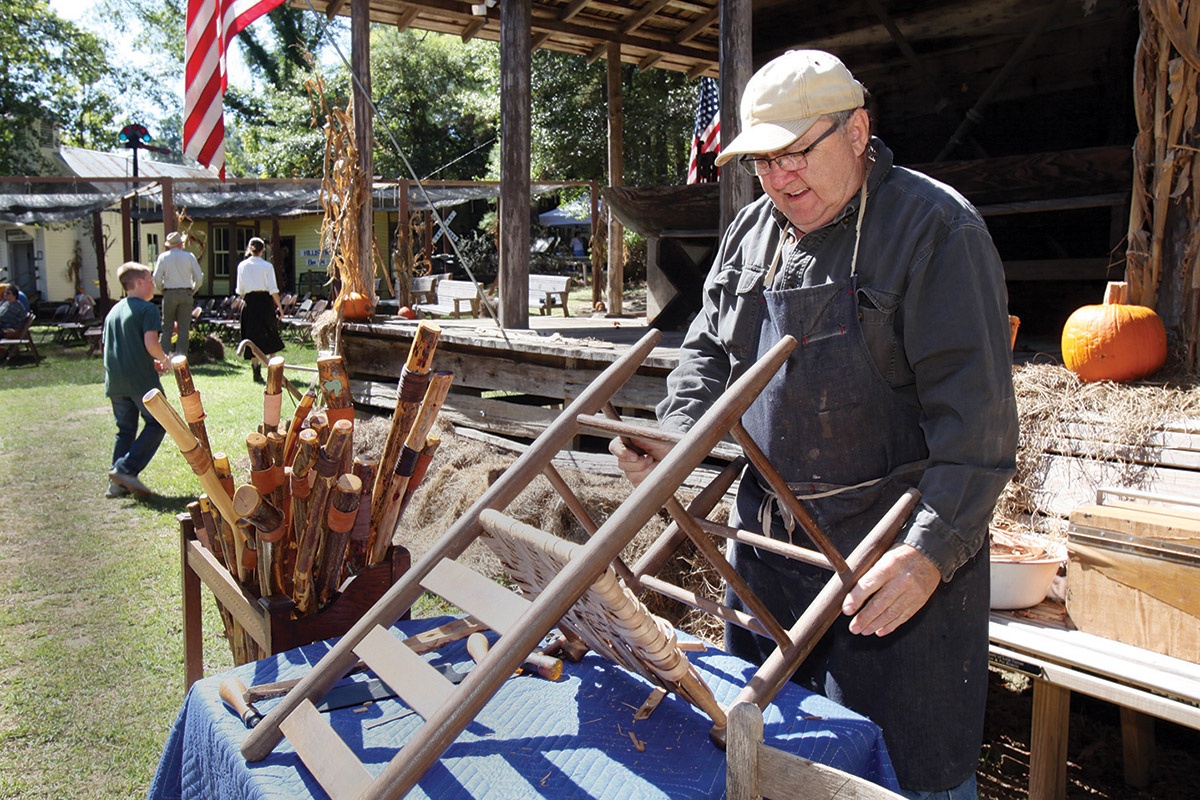
The village’s Main Street hosts various craft demonstrations.
Imagine farm folks riding into town on horse-drawn wagons and buggies to take care of business. Picture a woman, kids in tow, shopping at the general store for flour and coffee and fabric for the family’s clothes. Visualize a man stopping by the blacksmith to check on repairs of his plow. Look to the end of the street and see passengers waiting on a train at the railroad depot. Or wonder if pews will fill next Sunday at the church.
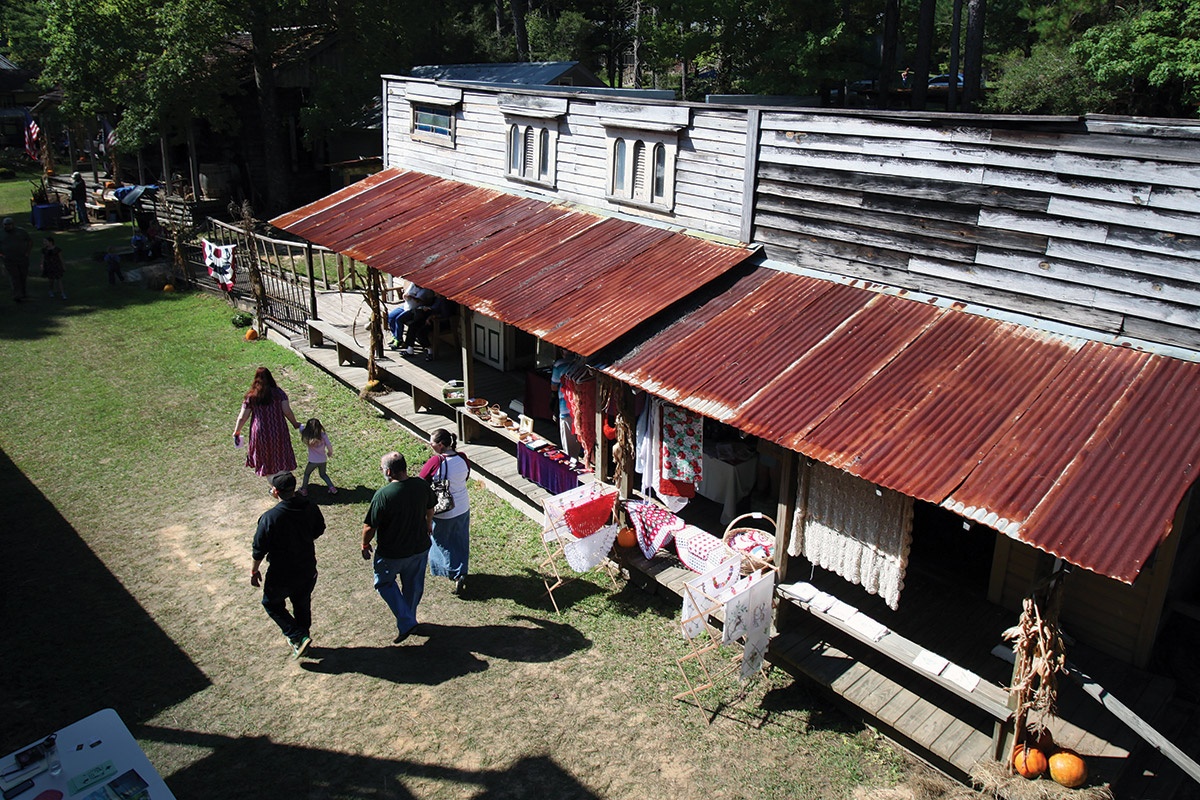
The Heritage Village Museum during the Harvest Festival.
Heritage Village Museum springs to life during its annual Harvest Festival, October 16–17 this year. The two-day celebration of heritage touts itself as the region’s largest fall folklife festival. The village swells with hundreds of students, history buffs and festivalgoers who eagerly watch period-dressed volunteers carry out demonstrations of pioneer crafts. The village echoes with performances of traditional music, dance and lively storytelling. There’s even cowboy bullwhip demonstrations and Wild West shootouts.
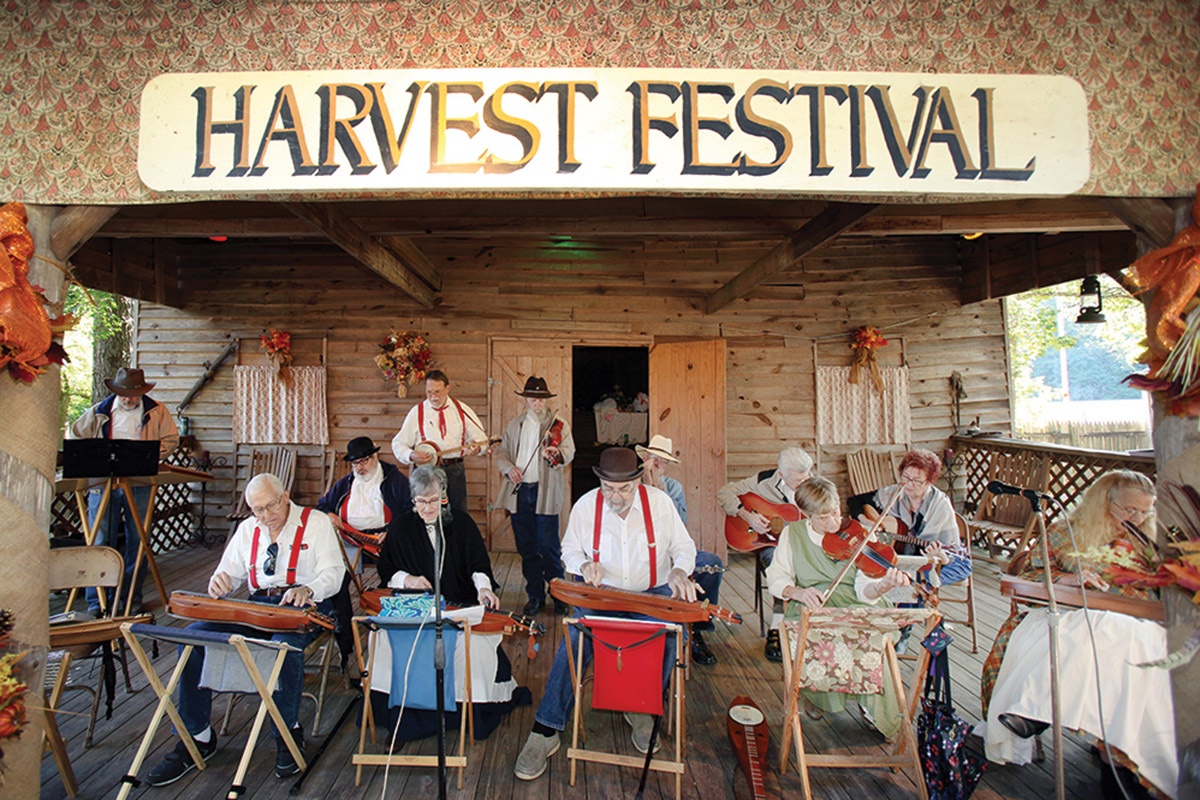
Southeast Texas Dulcimer Friends perform for festivalgoers.
During the festival and all year long, visitors can wander through village structures that are packed with period artifacts common in East Texas towns of the late 19th century. The Z.C. Collier Store is a replica, built from original materials, of a general mercantile that served Town Bluff on the Neches River. Throughout the store there’s antique merchandise, including cases of men’s garters and women’s hats, shelves of water buckets, candle molds, butter churns and canning jars. Built before electric service, the store sports a fireplace, wood-burning stove and hand-cranked telephone hanging on the wall.
The village features a range of businesses and facilities that would have kept a pioneer town bustling, including a newspaper office, saloon, livery stable, sheriff’s office, barbershop, bathhouse, candle shop, justice of the peace, seamstress shop, doctor’s office and one-room schoolhouse.
Thousands of furnishings and artifacts, donated by communities near and far, interpret the times. There’s a chair factory from Burkeville, log shed from Spurger, dentist office from Woodville, drug store from Rockland, post office from Pluck, church from Cherokee and train depot from Hillister. The vehicle barn boasts 20 restored buggies and wagons donated by the Panhandle-Plains Historical Museum in Canyon.
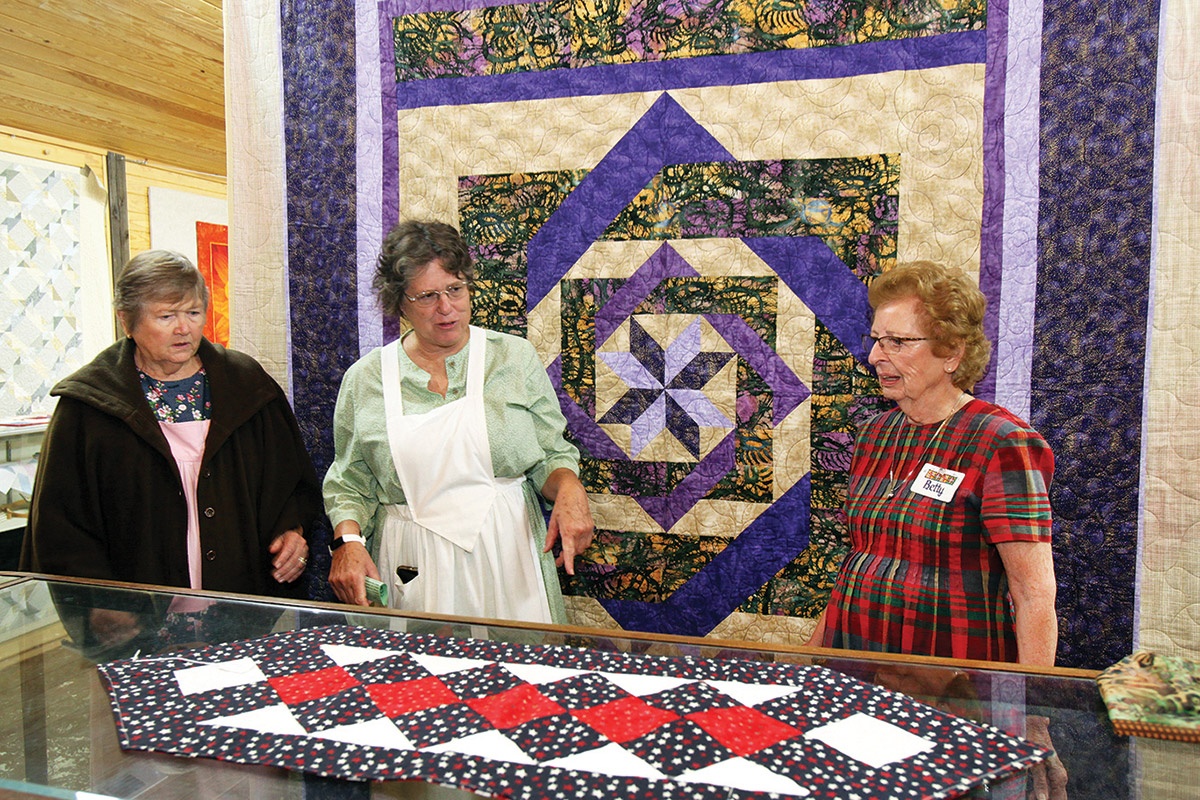
Quilts on display in the Fiber Arts Building, where the Sassy Scrappers Quilt Guild meets regularly.
The idea of turning back the hands of time continues to attract faithful fans such as the Henson family of Buna in Jasper County. Lisa Henson brought her home-schooled daughters to the village every year for more than a decade. At first it was to learn about pioneer life, but gradually Heritage Village became part of the family’s life.
“We fell in love with the place right away” Henson said. “We’ve made so many friendships here that we feel right at home.”
In fact her two teenage daughters recently joined the Big Thicket Outlaws, a reenactment group that performs during village festivals. And several years ago, Henson’s husband, James, took up the craft of weaving longleaf pine straw and native grasses into baskets. Now he sells them at the autumn event.
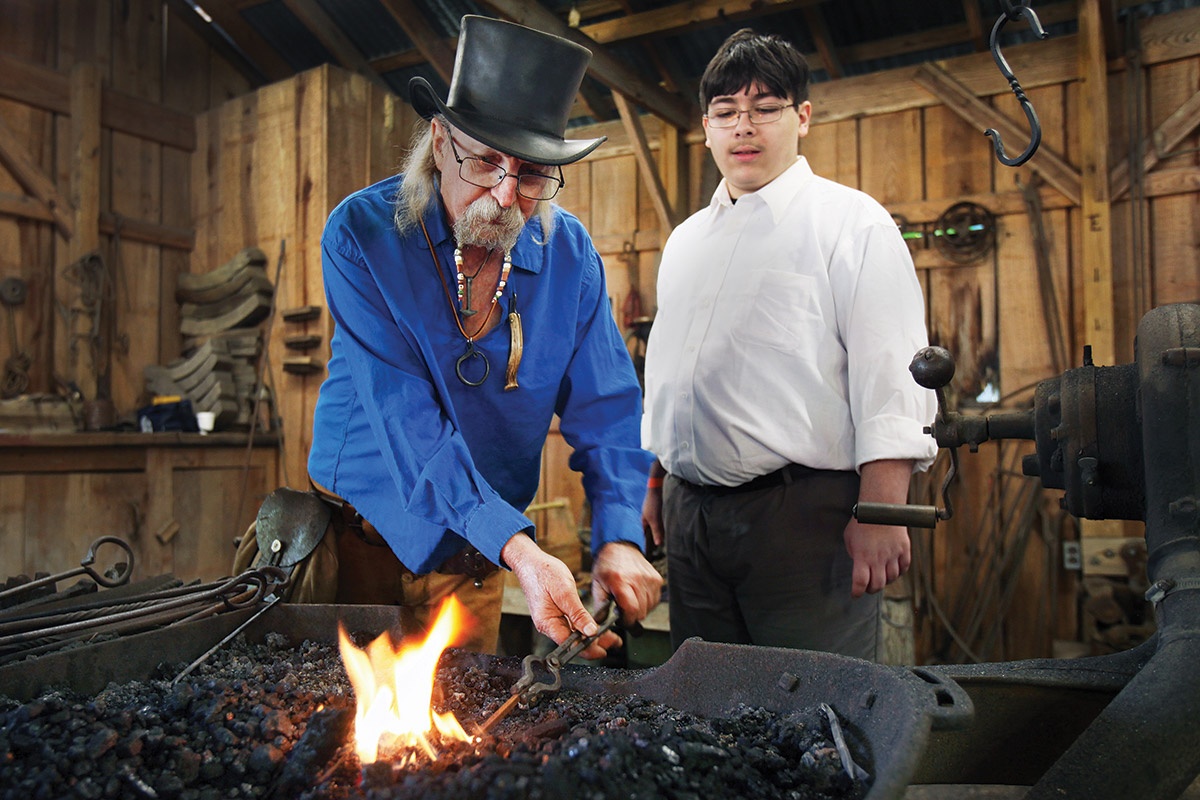
Blacksmith Tom Lundquist of Onalaska shows visitor Nicholas Bushnell of Louisiana how to heat and hammer iron into useful objects.
Between craft demonstrations and browsing village stores, festival visitors enjoy old-fashioned foods such as Indian fry bread, grilled kebabs and fresh-popped kettle corn.
Attendees also flock to boarding-style dining at the Pickett House Restaurant, perhaps the star attraction of Heritage Village. One price gets you all-you-can-eat crispy fried chicken, chicken and dumplings, turnip greens, mashed potatoes, iced tea, and biscuits and cornbread. Cinnamon-laced peach cobbler completes the feast. The eatery has dished up country fare for customers since the mid-1960s—even before the festival began.
Historical Beginnings
Heritage Village was first known as Heritage Gardens during the mid-1960s, when a local artist named Clyde Gray operated a gallery of his ceramic tile paintings, and his wife, Lillian, who was known as Bill, nurtured elaborate gardens. To attract more people, the Grays added two historical structures—the 1866 Tolar kitchen cabin from Hillister (an early squared-log cabin bearing a state historical marker) and the 1909 two-room school from Midway.
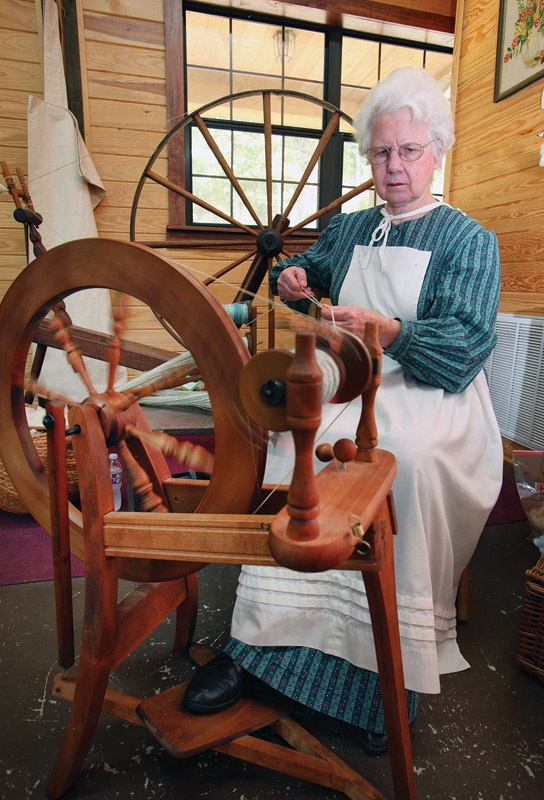
Connie Lovelace of Woodville demonstrates and explains her spinning wheel.
They converted the schoolhouse into the Pickett House Restaurant, named for friend and former Houston mayor C.A. “Neal” Pickett. Bill operated the eatery, often serving ingredients she grew in her garden. The Grays covered the dining room walls with festive circus posters collected by another friend, Rudolph “Bubba” Voss of Orange, who played in circus bands for many years.
The Grays added more structures and artifacts to form a village alongside the Pickett House and Tolar kitchen. The growing village became a top tourist attraction. In the late 1980s, the Tyler County Heritage Society bought Heritage Village and continues to operate it with support from members and volunteers.
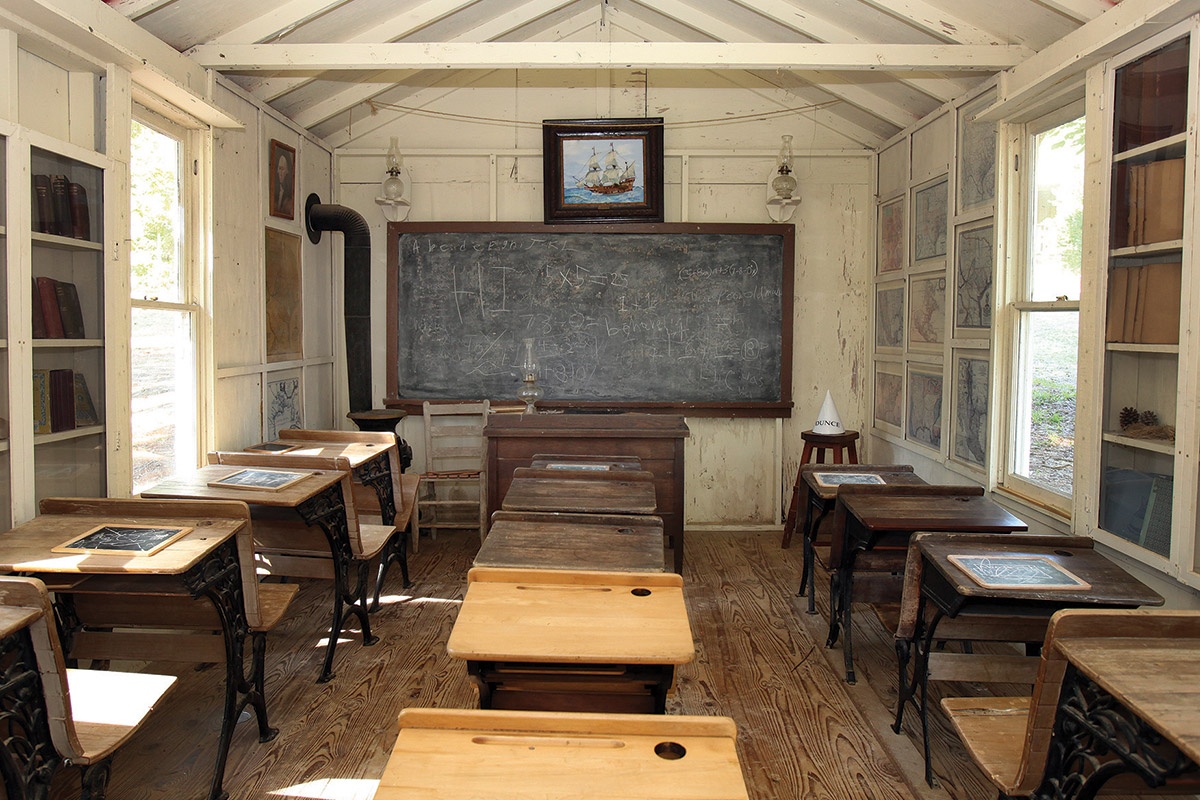
A replica early schoolhouse, replete with authentic desks, bell and dunce hat.
To honor the Grays, the Heritage Society maintains the Clyde Gray House Museum, which houses a collection of Gray’s artworks and is available for tours during events and other days with prior arrangement. The society also offers the Whitmeyer Library, an archive of materials on history, pioneer arts, and flora and fauna. A society-operated store sells books and locally made items such as pottery, quilts, toys, jams, jellies and art. A recently completed nature trail, which is free to hike, leads through 11 acres, where interpretive signs educate about Big Thicket flora and fauna.
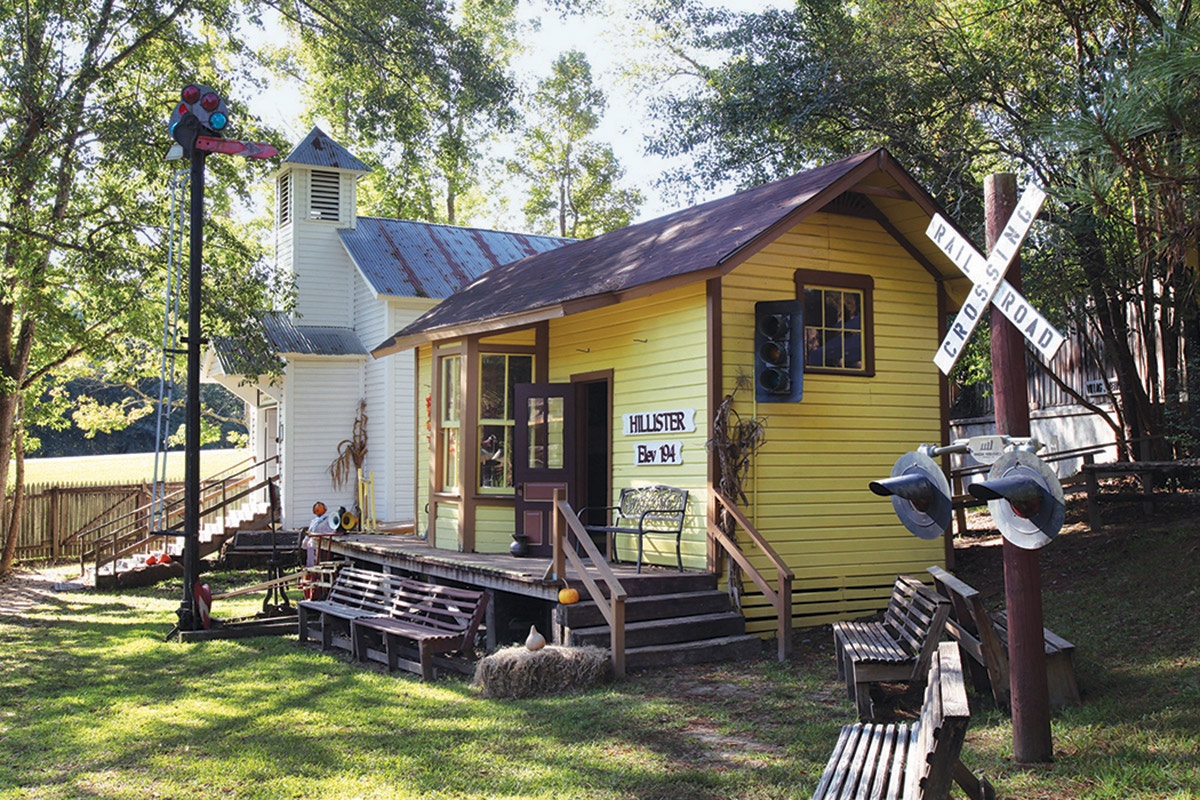
The village features historical structures such as the 1912 Cherokee Church and the depot from Hillister, furnished with turn-of-the-20th-century equipment.
Whether it’s facts about nature or long-ago lifestyles, education—especially of young people—remains the enduring goal of Heritage Village, says longtime director Ofeira Gazzaway.
“We discover that kids are actually interested in history when you show them how things were done in those days,” Gazzaway said. “It’s worth it when you see their eyes light up. We have kids come whose parents first came when they were kids. Each new generation are the ones who will carry this on into the future.”
